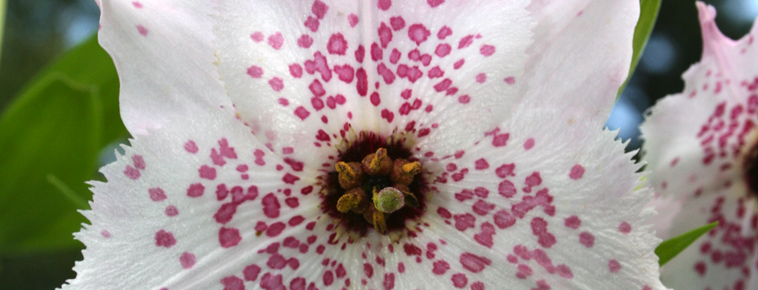iCONic TREES AT CLUNY
Cluny House Gardens can already lay claim to an extraordinary collection of conifers, including Britain’s widest tree, the Champion Redwood, as well as what may be the oldest Dawn Redwood in Perthshire, and many other fine and rare species.
Now the conifers grown at Cluny are about to become even more diverse as the garden participates in the iCONic Project – a Perthshire based effort to help save some of the 50% of the world’s conifers that are threatened with extinction in the wild. iCONic will use the forests, gardens and estates of Perthshire as safe-havens for ex-situ conservation collections of threatened trees. These collections will be regularly monitored, and will provide a living resource available to plant scientists and conservationists around the world.
Gardens such as Cluny can play a vital role in the effort to conserve plants by working with projects such as iCONic. In the short time Cluny has been participating in the project, the remarkable growth rates on some of the species already planted is providing knowledge which can aid iCONic in many aspects of its work.
In addition, by providing a home to threatened species, Cluny can add rare and obscure plants to its collection that it may not otherwise be able to grow. Just like the Champion Redwood planted by the Victorians in the 1860s, so may the rare conifers planted now be the champions of the future!
iCONic PLANTINGS AT CLUNY
Fitzroya cupressoides
The ‘Alerce’, named for Captain Fitzroy of the Beagle, occurs in southern Chile and Argentina. Centuries of unsustainable logging and habitat destruction have led to Fitzroya becoming threatened with extinction in the wild, and it is now subject to in-situ and ex-situ conservation projects aimed at securing its future. It is a rare tree in cultivation in Britain – most plants are young specimens grown as part of an ex-situ conservation effort including the iCONic project, of which the Cluny plant is part. The specimen planted at Cluny in 2006 has almost doubled in size by early 2009; as promising a start as could be hoped for!
Pilgerodendron uviferum
Sharing much of the range of Fitzroya in southern Chile and Argentina, Pilgerodendron is a rare and obscure member of the Cypress family, and is the most southerly occurring conifer in the world. A very rare tree in cultivation in Britain, the Cluny plant may well be the only specimen in Perthshire! It is planted in a boggy part of the garden to mimic its natural environment and is thriving, having put on good healthy growth every year since planting in 2006.
Prumnopitys andina
Another Chilean conifer, this member of the Podocarp family is commonly known as the ‘Chilean Plum Yew’, a reference to its foliage which has a strong resemblance to that of our common European yew. It is threatened in its native range by habitat destruction, a result of logging, land conversion and dam building. A peculiar plant in cultivation, it does not like wet conditions at all, and numerous attempts to cultivate it in the west of Scotland have failed. As part of iCONic, it is going to be tried in a variety of sites in Perthshire to improve the understanding of its cultivation requirements.
Torreya taxifolia
‘Stinking Cedar’, or ‘Florida Torreya’ as it may prefer to be known, is an extremely rare member of the yew-family, growing only in a very small part of Florida and adjacent Georgia, USA. It is threatened there by disease which has wiped out almost all mature individuals. As a result of this, no plants are now producing seed, and only straggly regeneration from old stumps remains. This species has been the subject of an intensive conservation programme, which has propagated thousands of plants from cuttings and distributed them to an international network of Botanic Gardens, including the Royal Botanic Garden Edinburgh. Three of these plants were planted at Cluny in December 2008 as part of this international conservation effort, and this may be the first time this species has ever been planted in Perthshire.
Nothofagus alessandrii
This southern beech is endemic to a small coastal area of central Chile, where it is considered to be Chile’s most threatened tree, with less than 3.5km² of forest remaining. Though not a conifer, a plant was sent to Cluny from a recent introduction as it is very rare in cultivation. By distributing it around a variety of sites with different climatic conditions, it is possible to get a better understanding of its requirements which can aid ex-situ conservation efforts. The Cluny tree was planted in December 2008 having spent several months acclimatising, during which time it had put on good growth, showing this unusual species has potential here.
Tom Christian, Royal Botanic Garden Edinburgh
If you would like to learn more about the iCONic project please visit the project’s homepage at www.iconictrees.org

